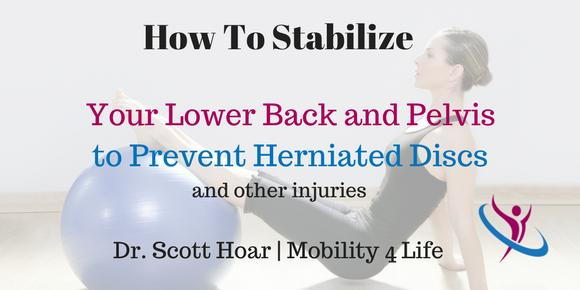
There are so many lower back and knee injuries that occur because of the instability of the core. I'm talking about:
- herniated discs
- bulging discs
- low back pain
- arthritis
- sciatica
- sacroiliac joint disease
- hip strains
- tight hamstrings
- etc
When asked why this happens, you often hear professionals talk about a lack of "stability" in the core. But what does that really mean?
Often, when I tell my patients that their core and spine is unstable I hear responses like:
"But I can do a plank for 3 minutes, what do you mean my core is weak???"
or
"I can Power Clean over 300 lbs, how can my core be weak?"
or
"But I do core work every day!"
The problem here is actually in the language used. When I told my patients that their spine and core were unstable, for some reason they heard "weak." But, that's not the right word nor was it what I was really suggesting. When you hear the word unstable you shouldn't automatically think "weak," even though many of us do think just that. We need to retrain our thought process and instead think, "ineffective." When we move our bodies, the job of the core is to contract thereby inducing negative pressure and tension (think of a vacuum effect from a suction cup on glass). This creates no movement and effectively "stabilizes" the area. Have you ever tried to put a dirty or ineffective suction cup on glass? What happens? It moves. That's "instability," not weakness.
So how can we make sure that when we try to move our bodies, we don't have excessive inappropriate movement of the lower back and pelvis that causes the injuries like low back pain and others that we described earlier?
The "Perturbation"
If you've ever had an older brother then you know what "perturbing" someone is. I think of the older brother that's constantly poking or prodding... constantly annoying and messing with the younger sibling. They're perturbing you!
You can see exactly how I use perturbation to demonstrate the presence of a lack of stability in one's core on this video. We're going over an exercise called the "Single Leg Bridge." This is a great beginner's level exercise where we're looking to demonstrate the ability to extend the hip while maintaining a neutral (and protected) spine.
So we have the client hug one knee to the chest, then raise the pelvis off the ground and hold it there, and then you look for a few things - is the client:
- holding their breath?
- shaking/wobbling?
- leaning to one side?
- is their face turning red?
- are veins popping out of their neck or face?
- is their hamstring cramping up and being sent into spasm?
All of these are signs of instability and "cheating" during a single leg bridge exercise. If none of those are present, then I check them with perturbation. This is how I like to do it:
The greatest part of this tool is how it helps to communicate to your client what instability looks and feels like. You don't don't have to conceptualize and describe what instability is when the client can actually feel it. The most important part of utilizing this tool, however, is how you describe what it is we're doing and why.
My normal explanation goes something like this:
"Okay so remember earlier when I told you we want to have stability and control in your lower back/pelvis and good movement in your hips?"
"Yes"
"Now we're going to check and see if you actually have that. In a second, I'm going to have you raise your pelvis up and hold it there. Then I'm going to bully you around and see if I can knock you over. There are two possible outcomes here:
You have good stability and control which looks like this (perform perturbation with them their pelvis still on the ground. Not much movement should occur)
If you have poor stability and control it will look like this (perform perturbation and have them wobble over)."
Then perform the exercise. The majority of the time, the client will wobble over. If that's the case, then they need to work on single leg glute bridges.
If they don't wobble, great! Instability in this movement isn't a problem and you can move on to the next exercise.
Good luck! Please leave a comment below to let me know if this article is helpful for you.